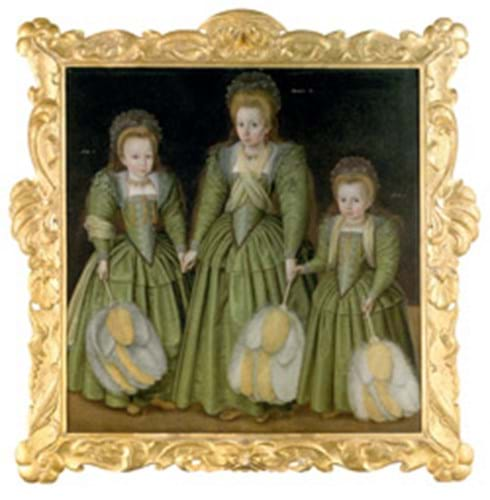
At the sale on June 18, the portrait was estimated of £150,000-250,000 and at least three bidders contested it from a starting point of £60,000. The successful purchaser was Phillip Mould, the London portrait dealer who has carved a niche for himself by researching and identifying unattributed works.
The portrait was inscribed with the girl's respective ages and Christie's had catalogued it as "English School" and dated it to c.1590-1600 on the basis of the sitters' costumes.
Prior to the sale, Mould and his team had done some sleuthing and managed to identify this Elizabethan trio - adding further to the appeal of what was already a very powerful image.
Simon Sainsbury had acquired the painting from Christopher Gibbs. Prior to this it was sold at Sotheby's in 1977 from the Broadwood Trust having belonged to Captain Evelyn Broadwood of Lyne House, Capel, Surrey.
There was an earlier "provenance by repute" to The Earls of Dysart, Ham House but Mould had discovered that the painting was sold in 1824 by an art dealer named Rodd who had accompanied it with a very full description: "Egerton Elizabeth, Vere and Mary, Granddaughters of Lord Chancellor Egerton, canvas 54 inches by 54, three whole length figures at the ages of 3, 5, and 6 richly habited in green and ornamented by jewels, hands joined and each holding a feather fan, an undoubted picture by Marc Garrards and in a most singular frame of the time…"
Rodd's description goes on to give further details of the Egerton sisters' family background, their marriages and locates them in the county of Cheshire.
Lord Chancellor Egerton was Thomas Egerton, first Viscount Brackley (1540-1617) and his eldest son Thomas had three daughters: Elizabeth, Mary and Vere who were born c.1594, c.1595 and c.1589.
Happily, Rodd's description and the ages tally with those of the triple portait which gives it a date of c.1601-2.
By Anne Crane




